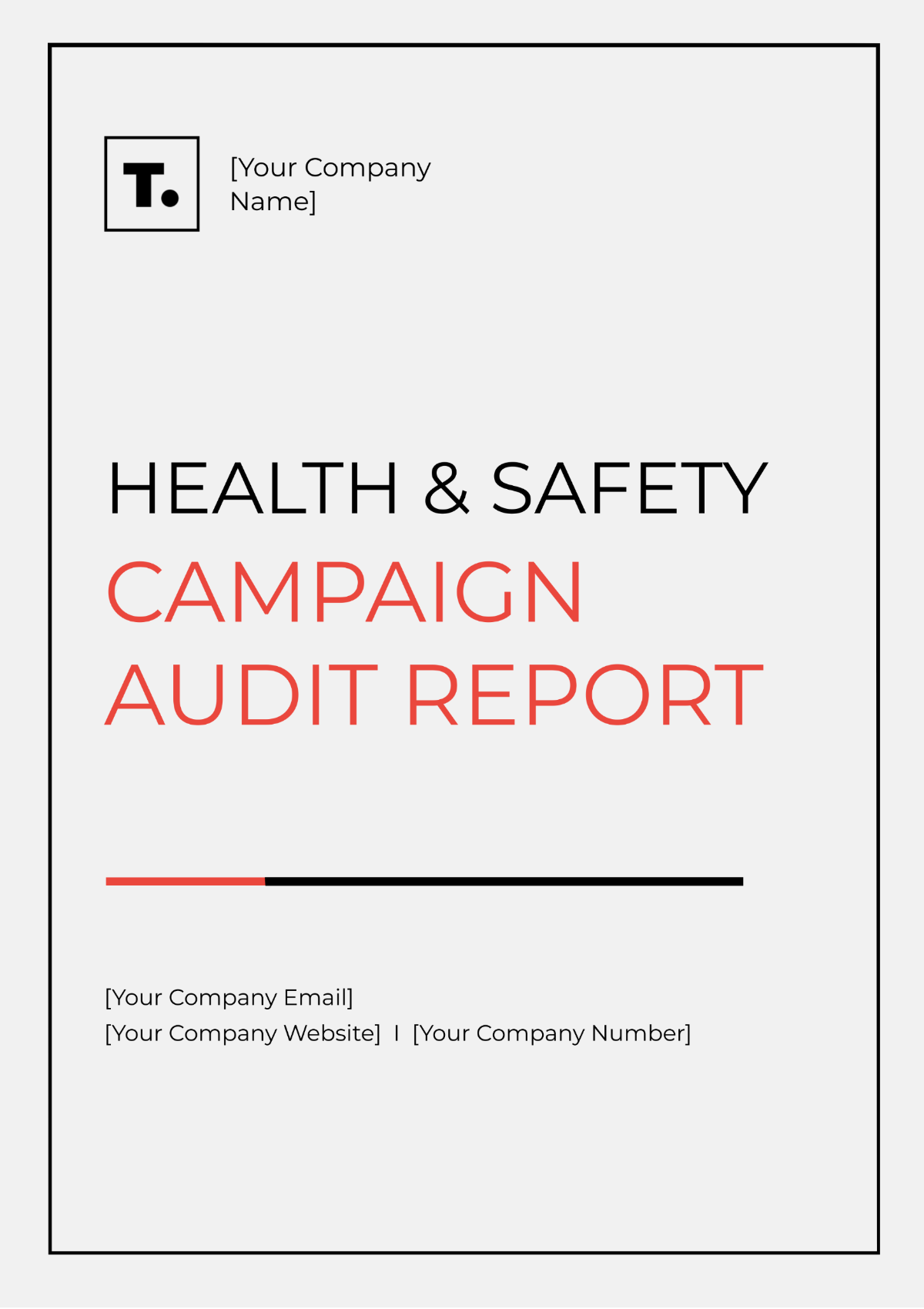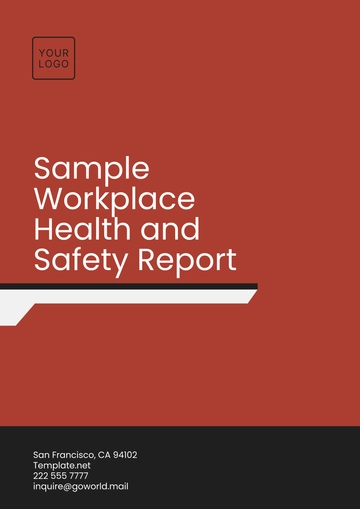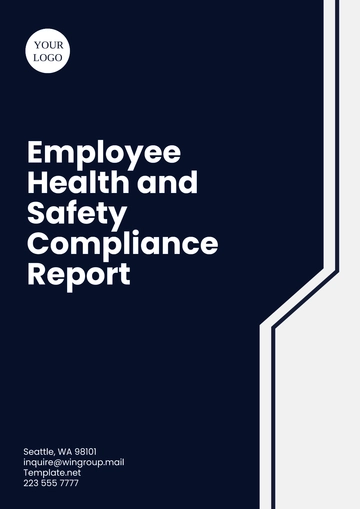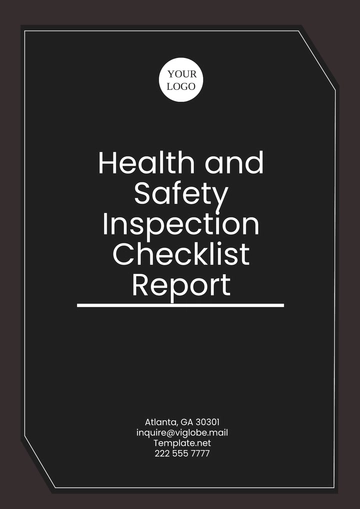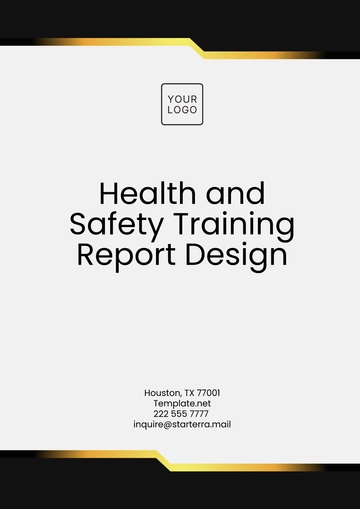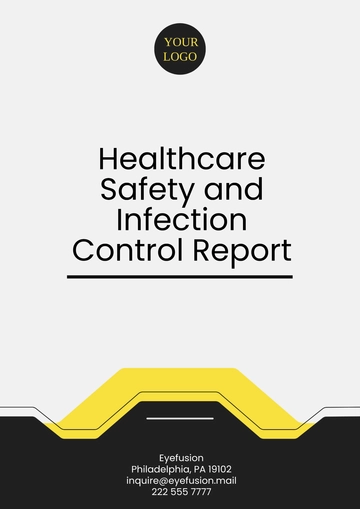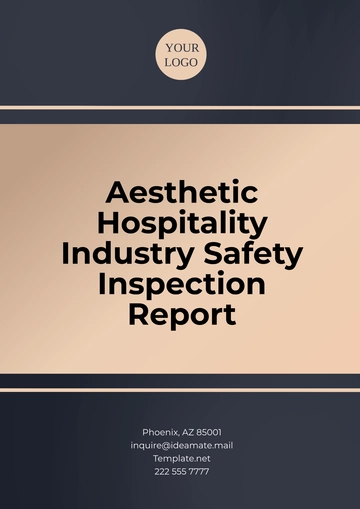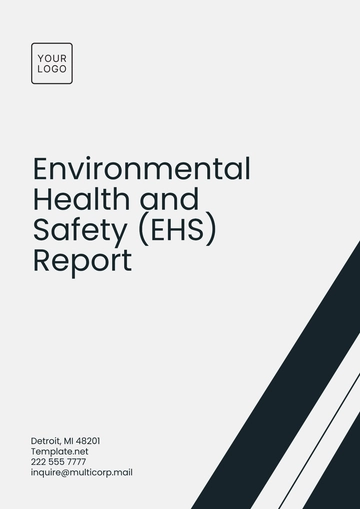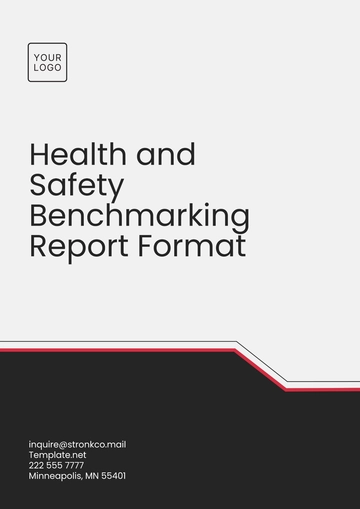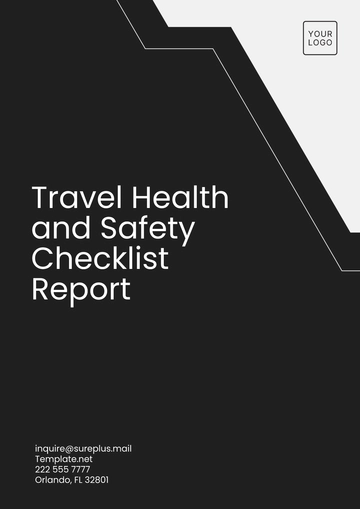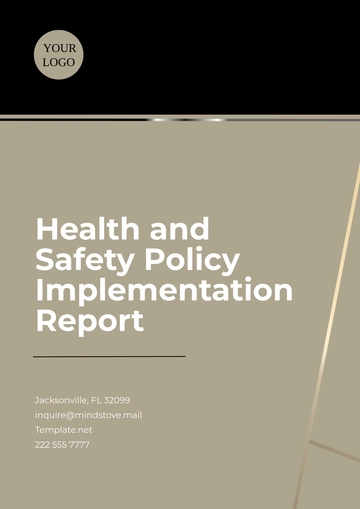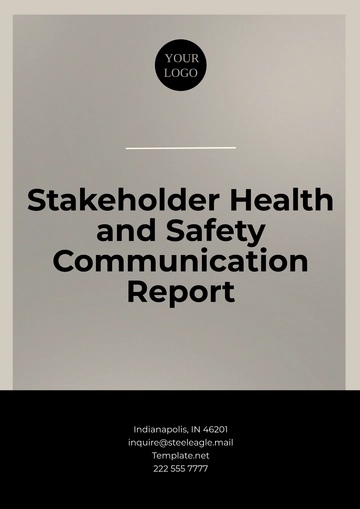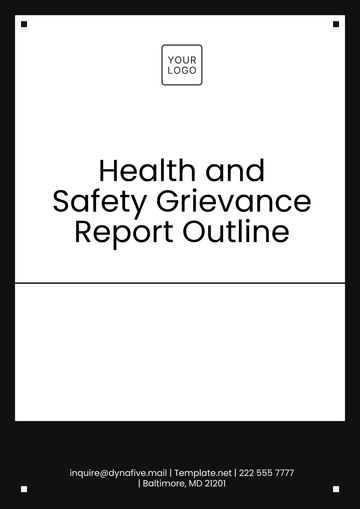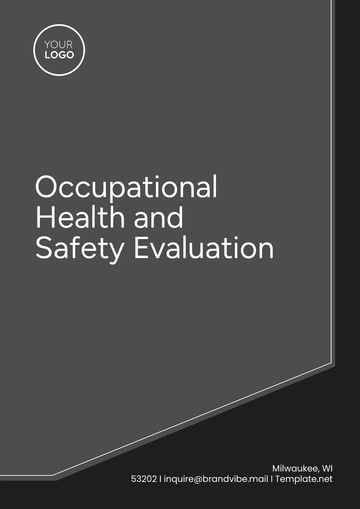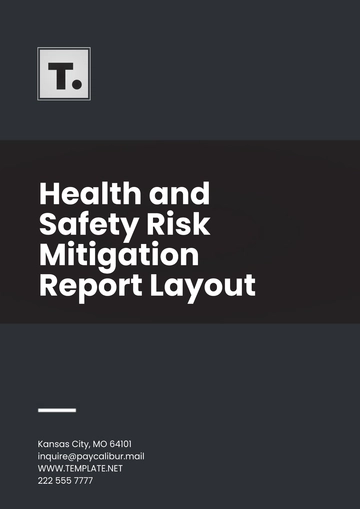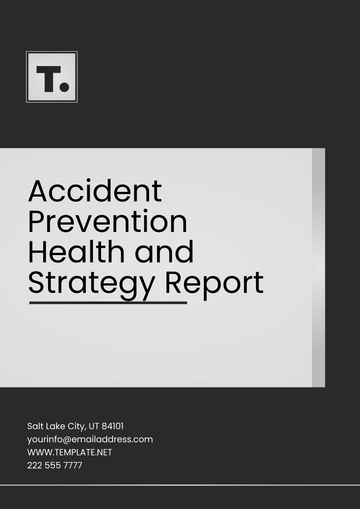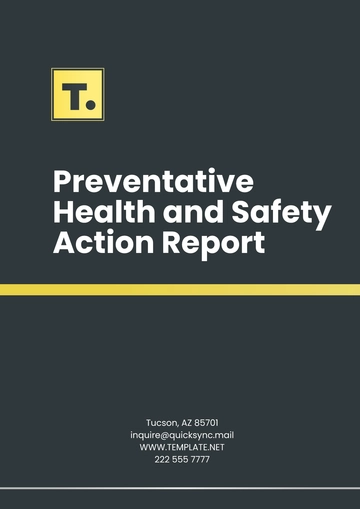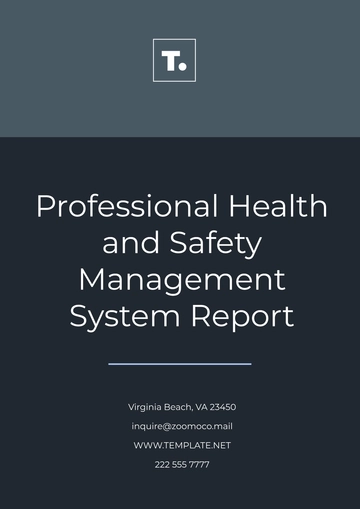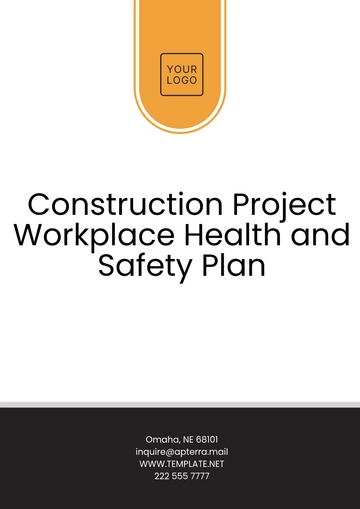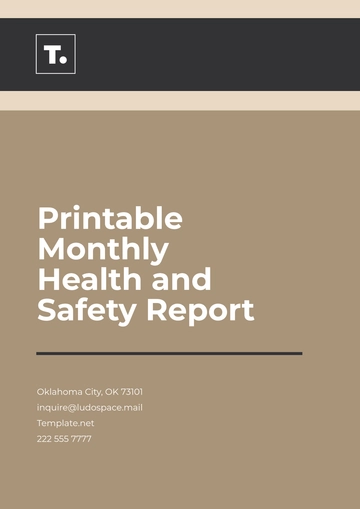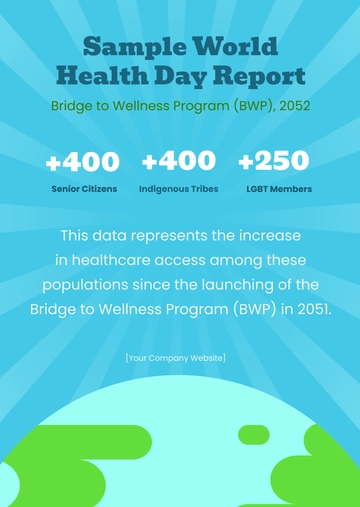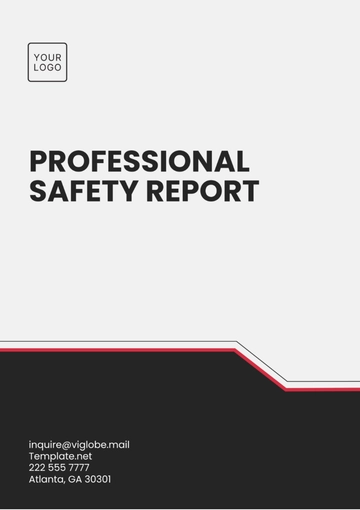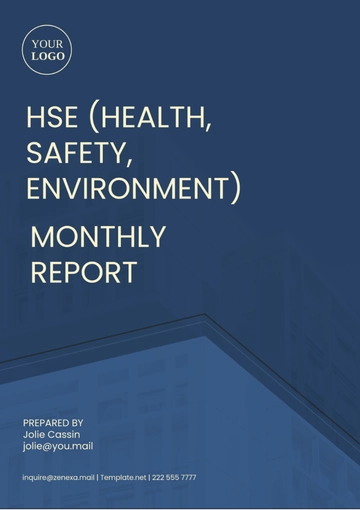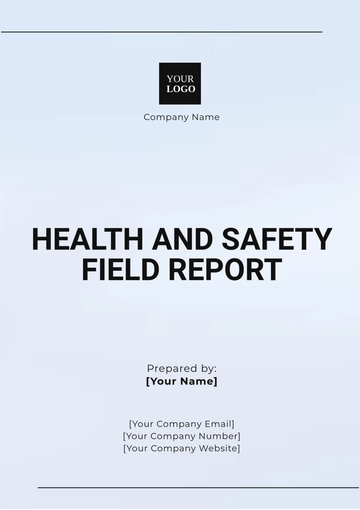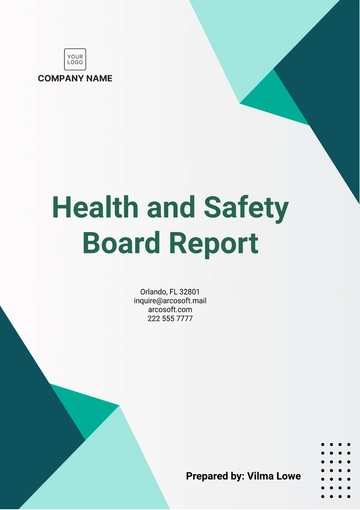Health & Safety Campaign Audit Report
I. Introduction
In accordance with [YOUR COMPANY NAME]'s commitment to maintaining a safe and healthy work environment, a comprehensive audit of the Health & Safety Campaigns was conducted. The objective of this audit was to assess the effectiveness, compliance, and implementation of health and safety initiatives across the organization.
II. Scope
The audit covered the period from January 1, 2050, to December 31, 2050, and included the following areas:
A. Review of Health and Safety Policies and Procedures
Evaluation of the adequacy and clarity of policies related to workplace safety, including policies on ergonomics, personal protective equipment (PPE), hazard communication, and emergency response.
Assessment of the documentation and accessibility of these policies to all employees.
Analysis of the procedures for updating and communicating policy changes.
B. Evaluation of Training Programs
Review of the training programs provided to employees on various health and safety topics such as fire safety, first aid, chemical handling, and workplace ergonomics.
Assessment of the frequency and effectiveness of training sessions, including feedback mechanisms and evaluation processes.
Examination of records to ensure that all employees receive the required training and refresher courses as per regulatory requirements.
C. Assessment of Communication Strategies
Analysis of communication channels used to disseminate health and safety information, including emails, intranet announcements, safety meetings, and posters.
Evaluation of the clarity, frequency, and consistency of health and safety messages conveyed through these channels.
Review of mechanisms for employees to provide feedback or raise concerns regarding health and safety issues.
D. Examination of Incident Reporting and Investigation Processes
Assessment of procedures for reporting workplace incidents, accidents, near misses, and hazards.
Review of incident investigation protocols to determine the thoroughness and effectiveness of root cause analysis.
Analysis of corrective and preventive actions taken based on investigation findings to mitigate future risks.
III. Methodology
The audit was conducted through a combination of document review, interviews with key personnel including safety officers and department heads, and site inspections of various departments and work areas. It involved analysis of records, observation of practices, and discussions with relevant stakeholders to gather comprehensive data.
IV. Findings
A. Compliance with Health & Safety Policies
Policy Area | Finding | Recommendation |
|---|
Workplace Ergonomics | Policies are well-documented and communicated; updates not consistently communicated. | Continuously monitor compliance and ensure updates are effectively communicated through regular training and emails. |
Personal Protective Equipment | Policies are in place; need for clearer guidance on specific equipment use in different areas. | Develop clear guidelines and provide training on proper PPE use across all departments. |
B. Effectiveness of Training Programs
Training Topic | Finding | Recommendation |
|---|
Emergency Response Procedures | Regular training sessions are conducted; feedback indicates a desire for more interactive sessions. | Enhance training through interactive methods, practical demonstrations, and scenario-based exercises. |
Hazard Communication | Training provided; ensure all employees receive updated training as per regulatory requirements. | Develop a comprehensive training schedule and evaluation process to monitor training effectiveness regularly. |
C. Assessment of Communication Strategies
Communication Channel | Finding | Recommendation |
|---|
Email Communication | Adequate for disseminating health and safety updates; could improve consistency in messaging. | Implement a structured communication plan with standardized templates and regular updates on safety protocols. |
Safety Meetings | Effective for direct communication; ensure agendas include relevant safety topics consistently. | Conduct regular safety meetings with documented minutes and action items for follow-up and accountability. |
D. Examination of Incident Reporting and Investigation Processes
Process Area | Finding | Recommendation |
|---|
Incident Reporting | Procedures were established but inconsistently followed across departments. | Standardize incident reporting protocols with mandatory training sessions on incident reporting. |
Incident Investigation | Investigation thoroughness varied; need for consistent root cause analysis. | Develop a standardized investigation template and training program for all departmental investigators. |
Corrective Actions | Actions taken; recommend regular reviews to ensure effectiveness. | Implement a tracking system for corrective actions with periodic audits to measure effectiveness. |
V. Recommendations
Based on the findings of the audit, the following recommendations are proposed:
Strengthen monitoring of compliance with health and safety policies through regular audits and employee feedback mechanisms.
Enhance the effectiveness of training programs through interactive methods, practical demonstrations, and continuous evaluation of training outcomes.
Implement a structured communication plan to improve awareness of health and safety initiatives, ensuring consistent messaging across all departments.
Standardize incident reporting protocols and provide training to all employees on reporting procedures, emphasizing the importance of timely incident notification and thorough investigation.
VI. Conclusion
In conclusion, the Health & Safety Campaign Audit identified areas of strength and opportunities for improvement in promoting a safe work environment at [YOUR COMPANY NAME]. By implementing the recommendations outlined in this report, [YOUR COMPANY NAME] can further enhance its commitment to health and safety, ensuring the well-being of all employees and stakeholders.
Report Templates @ Template.net
